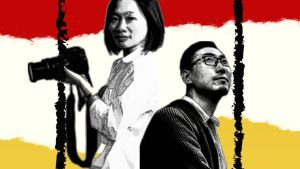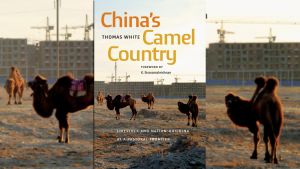What Future Is There for Human Rights Lawyering in China?
Eighteen months after the Chinese crackdown on human rights lawyers started on 9 July 2015 (the so-called ‘709 Crackdown’), a debate took place within the communities of China’s human rights lawyers (weiquan lüshi). It was a brief, yet passionate and provocative, discussion on some fundamental questions about the limits of the law in seeking justice and protecting rights in an authoritarian state, and on the limited role that lawyers can play in this endeavour. A pointed question that has been raised is whether the traditional case-focused and law-centred strategy of legal mobilisation, moderate or aggressive, is still a feasible approach to bring structural changes to the political system, incremental or otherwise. In the aftermath of the latest wave of repression, lawyers started to reflect on their past successes and failures, casting doubts on the potential of their own profession in catalysing political transformation. They also began to express deeply-seated anxiety, frustration, and confusion about human rights lawyering. Ultimately all the challenging questions boil down to this: is there a future for human rights lawyering in China as we know it?
This essay addresses this question by analysing the practices of human rights lawyering, and by examining in broad strokes the process through which human rights discourses are translated into practices and the circumstances in which a socio-legal mobilisation may fail or succeed. In particular, the article focuses on the collective and sustained endeavours in which human rights lawyers and other citizen activists advocate the rights of specific communities through a relatively stable organisational structure. The primary concern here is not with the exceptional successes, nor with the notable failures in rights practices manifested in individual cases. Instead, the point is to take a close look at institutionalised routines in which legal cases are used as entry points to mobilise support from popular opinion, and bring those pressures to bear on decision-makers.
Human Rights Ideas as an External Shock
To change a stagnant system, an external shock through the challenge of fresh and even ‘subversive’ ideas is necessary. Most of the human rights ideas, as practiced in China, originated outside of China and were then appropriated by Chinese reformers. Given that China is a late-comer in the construction of its legal system, importation and appropriation of foreign ideas has proved crucial for the seeding, incubation, and growth of rights discourses and practices.
Since legal activism is guided by a moral vision of social change for the better, ideas that are appropriated are often regarded as progressive with some liberating and emancipatory impact. As such, they serve multiple functions. Ideas have an enlightening power: they educate, raise awareness, allow people to look at their world in alternative ways, and, in general, they lift up people’s spirit. Ideas also have the instrumental value of empowering people to re-frame their grievances and claims, enabling them to articulate and assert their positions in more effective and forceful ways.
The appropriation of human rights discourses has always been a contentious issue. Some concepts have been quickly accepted and entered the mainstream. Others remain lofty ideas at a philosophic level, but have not been meaningfully put into practice. Yet others have been rejected firmly at an ideological level. In general, to become part of the mainstream, a rights discourse has to be politically acceptable or at least tolerated. In addition, we can say that if a discourse is merely property of the elites or vanguards, and the masses cannot claim ownership and make use of it in their daily life, it will not be effective.
Legal activism is a top-down process in which elite members of a community—and those with visions, resources, and leadership ability—can, in the right circumstances, translate rights discourse into practices that will eventually catalyse a rights movement. China is not short of heroes or heroines in the legal field who have the courage and wisdom to fight alone. But what makes China’s rights practice enduring is the alliance making in the rights complex, capacity building in the NGO sectors, and the development of a critical citizenship among stakeholders and constituents.
No Leaders, No Rights Movements
China’s rights movement is closely associated with a small group of individuals who often single-handedly trigger and then lead rights mobilisation in their respective fields. Few would deny the significant contributions that a limited number of individuals have made in organising and leading China’s rights practices. No leaders, no rights movements.
Leaders in China’s rights movement share many core characteristics. A key quality of an effective rights leader is their credibility among the constituents they seek to represent. Leaders are not only embedded in the communities they work with, but are also able to develop common interests through their advocacy. An idea may be foreign, but organisation must be indigenous, and activism that is resilient and effective must be bottom up and inside out. In that sense, successful leaders are insiders. What is crucial, in the end, is the common identity, developed through frequent interpersonal connections, that binds leaders and constituents. Leaders who are embedded in, part of, and supported by the respective physical and cultural communities are able to make their ideas enter the mainstream, empower and energise communities, and translate their ideas into practice. A shared identity, such as that of gender, sex orientation, disability, or social status, generates a strong sense of internal solidarity which, in turn, motivates members to strive for a collective endeavour.
There exist different strategies based on different positioning of the leaders and the demands of their constituents. There are also significant fault lines, which divide rights movements in various subfields. First of all, there is a divide based on agenda setting and prioritisation of issues between elitists who aim at policy change and political impact, and grassroots campaigners who are principally concerned with welfare and short-term interests. Second, there is a fault line between those who focus on individual cases and those who prioritise institutional and structural changes. The main question in this case is whether the limited resources should be spent on addressing some immediate concerns or on raising more structural issues targeting a root cause. Finally, there is differentiation between those who work for and within the system, and those who challenge it. Traditional human rights lawyering is suspicious of legal institutions, and treats courts as adversaries rather than partners to work with and rely on. However, many lawyers insistently rely on the system to achieve larger policy objectives. Instead of challenging or bypassing the courts, there is now a more critical engagement between judges and lawyers in the courtroom, as well as in the court of public opinion.
For instance, the celebrated Mr Lu Jun, a key leader in China’s civil society, argues persistently and forcefully that organisation matters the most in socio-legal activism. By organisation, Lu means coordinated and sustained socio-legal mobilisation that is case-focused and rights-based. This requires the active participation of lawyers, NGOs, and media, aiming simultaneously at influencing the immediate legal decision, shaping public opinion, and lobbying institutions for certain legal and policy changes. Under Lu Jun’s leadership, the NGO Yirenping excelled in public interest advocacy, but this was prior to the tightening of space for legal mobilisation and, indeed, Lu himself has become a victim of the crackdown. Can this style of public interest lawyering continue in these new and visibly more hostile circumstances?
Lingering Spaces for Socio-Legal Mobilisation
While the world’s attention is directed to the persecution of lawyers and activists in the wake of the 709 Crackdown, there remains in China a resilient form of socio-legal mobilisation with a sharp focus on equality rights. Yes, there is much less political space for activism and street action, but while this new hostile environment has halted the flash mob type of street action, a court-centric mobilisation is still feasible. This is a familiar story in which human rights lawyers work closely with the respective NGOs and use litigation as an entry point to shape and influence public opinion with the ultimate goal of achieving certain legal or policy changes.
A key difficulty in launching public interest litigation today is the absence of plaintiffs. Suffering and grievances abound, but victims who are willing to step up to confront their bullies are a rare occurrence. Once a plaintiff is identified and prepped, a campaign has to be designed and implemented. A suitable team of public interest lawyers is retained, law professors in the respective fields are consulted, and journalists are notified. Once a case is in court, the event is widely publicised and circulated in the media—including in official media—whose involvement may have been reduced but has not been prohibited. In these cases, all the parties in the rights arena have a common goal, that is to make the case educational for the general public and a deterrent for offending parties. The media landscape remains a significant battleground for public interest cases. Through a strategy of combining legal action through social media mobilisation and civil society capacity building, underpinned by continuous legal reform to strengthen professionalism, lawyers are able to move forward—inch by inch—knowing the potential setbacks and risks that lie ahead.
Without a meaningful political process, legal mobilisation that is case-focused and court-centric is bound to be ‘petty’—soft in the approaches taken, incremental in objectives to achieve, and negligible in challenges to pose. Ten years ago, lawyers went to court to challenge discriminatory rules and practices; now the same lawyers have to restart, literally from scratch, similar litigation. Now, however, they have less political space while continuing to experience a similar degree of ignorance, insensitivity, and hostility. Even if they win, as they occasionally do, their actions do little to moderate political power or to hold the repressive arm of the state accountable.
Two Answers to the Challenges Ahead
Activist lawyers have offered two answers to the challenges. A ‘weak’ answer relies on remedial justice. That is, while well aware of the structural constraints placed on socio-legal activism, lawyers can still choose to do whatever they are allowed to do in order to make a contribution. As long as there is space—no matter how limited this space is—and as long as there are cases—no matter how petty they are—lawyers will continue.
A ‘strong’ answer points to the fact that public interest law survives a brutal political repression thanks to the resilience and strength of a rebellious sector in the legal profession and in civil society. Public interest litigation is not mainly about winning a case, but is about persuading power holders and educating the general public. Education and persuasion are necessarily slow paced and incremental in their processes. In addition, cases and the battles surrounding them serve as boosters for all stakeholders in the rights complex as, one by one, they strengthen the resolve of the forces of civil society and enhance their capacity in their on-going negotiations with the Party-state.
More specifically and pointedly, individual cases do trigger systemic or structural changes. There are many examples of case-driven changes that have happened in the past. While one can argue that legal advocacy in authoritarian states cannot lead to transformative political change—and that, as some human rights lawyers insist, legal battles in court rooms do not have a democratisation potential—one can argue with equal force that, as long as the regime embraces a degree of legality and promulgates laws to protect a range of legal rights, those rights-friendly laws can be enforced more or less effectively, and rights can be protected more or less rigorously. Legal and political opportunities are there, and it depends on civic leaders, professionals, and civil society at large to seize the opportunities to empower their human agency and to maximise their rights and freedoms through socio-legal action.





